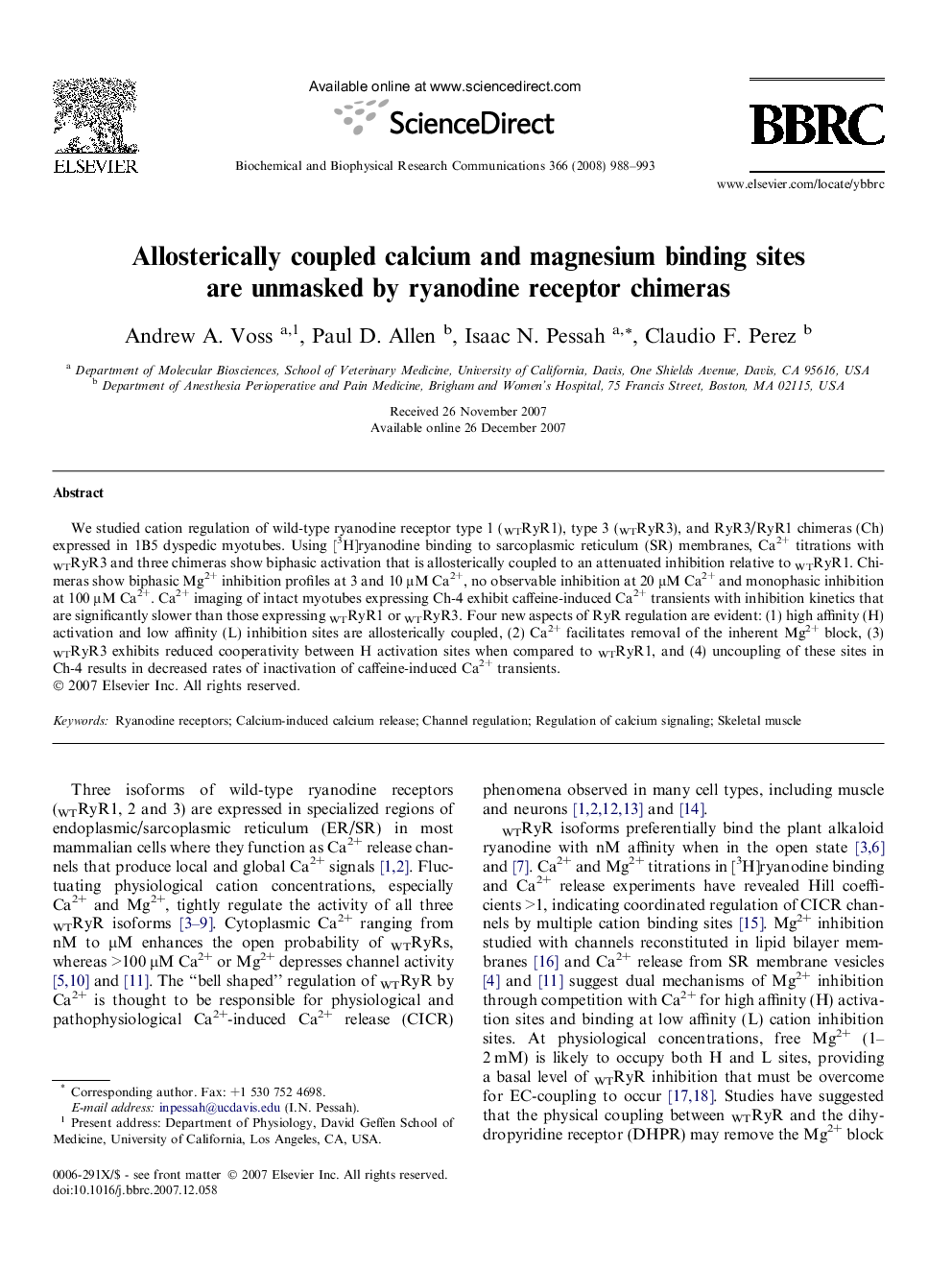| Article ID | Journal | Published Year | Pages | File Type |
|---|---|---|---|---|
| 1936588 | Biochemical and Biophysical Research Communications | 2008 | 6 Pages |
Abstract
We studied cation regulation of wild-type ryanodine receptor type 1 (WTRyR1), type 3 (WTRyR3), and RyR3/RyR1 chimeras (Ch) expressed in 1B5 dyspedic myotubes. Using [3H]ryanodine binding to sarcoplasmic reticulum (SR) membranes, Ca2+ titrations with WTRyR3 and three chimeras show biphasic activation that is allosterically coupled to an attenuated inhibition relative to WTRyR1. Chimeras show biphasic Mg2+ inhibition profiles at 3 and 10 μM Ca2+, no observable inhibition at 20 μM Ca2+ and monophasic inhibition at 100 μM Ca2+. Ca2+ imaging of intact myotubes expressing Ch-4 exhibit caffeine-induced Ca2+ transients with inhibition kinetics that are significantly slower than those expressing WTRyR1 or WTRyR3. Four new aspects of RyR regulation are evident: (1) high affinity (H) activation and low affinity (L) inhibition sites are allosterically coupled, (2) Ca2+ facilitates removal of the inherent Mg2+ block, (3) WTRyR3 exhibits reduced cooperativity between H activation sites when compared to WTRyR1, and (4) uncoupling of these sites in Ch-4 results in decreased rates of inactivation of caffeine-induced Ca2+ transients.
Related Topics
Life Sciences
Biochemistry, Genetics and Molecular Biology
Biochemistry
Authors
Andrew A. Voss, Paul D. Allen, Isaac N. Pessah, Claudio F. Perez,
